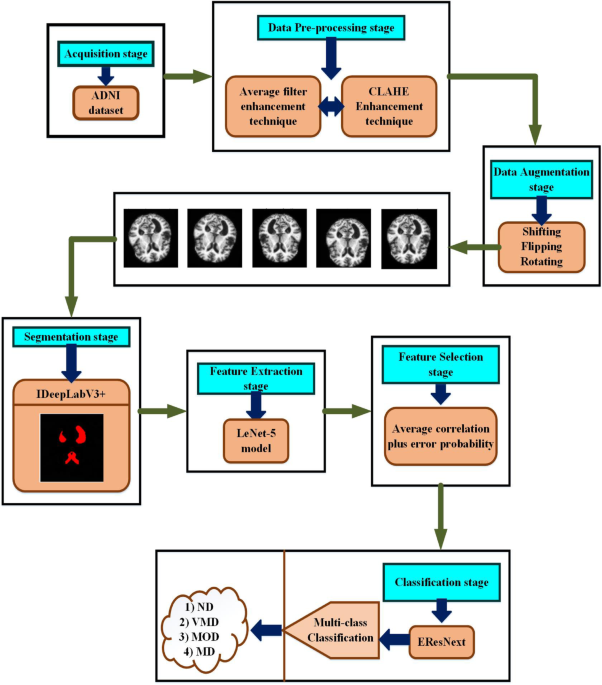Data Analytics Innovation Reshapes Enterprise Strategy with AI, Cloud, and Predictive Intelligence

Innovation in data analytics continues to transform how organizations leverage information assets to drive strategic decisions and competitive advantage. Modern approaches to business intelligence, predictive modeling, and data visualization have established new standards for extracting actionable insights from increasingly complex datasets. The most effective analytics implementations combine technical excellence with business acumen, delivering solutions that address specific organizational challenges while revealing previously hidden opportunities.
The evolution of data analytics has accelerated dramatically in recent years, with increasing emphasis on self-service capabilities, artificial intelligence integration, and cloud-based architectures. Organizations that implement robust analytics frameworks gain significant advantages in operational efficiency, customer engagement, and strategic agility. The intersection of technical sophistication and business understanding represents a particularly powerful dimension of modern analytics leadership, enabling capabilities that translate data into tangible business outcomes.
Based in Charlotte, North Carolina, Laxmi Vanam has witnessed this evolution throughout her career in data analytics. With a Master's in Information Science and Technology from Missouri University of Science and Technology and a Bachelor's in Engineering from Osmania University, Vanam combines academic excellence with extensive practical experience. Her professional journey has been characterized by transforming complex business challenges into strategic opportunities through advanced Business Intelligence solutions, predictive modeling, and data-driven decision-making.
Creating high-performing analytics teams requires thoughtful leadership approaches that balance technical capabilities with organizational alignment. The most successful methodologies emphasize diversity of thought, continuous learning, and strong connections to business objectives throughout the analytics lifecycle.
"My approach to building and leading analytics teams centers on three key principles: diversity of thought, continuous learning, and business alignment," explains Vanam, drawing from her experience leading analytics initiatives. "I believe the best analytics teams bring together people with varied backgrounds and perspectives, as this drives innovation and creates more robust solutions."
Fostering cultures of continuous learning ensures team members stay current with emerging technologies and methodologies, a critical consideration in the rapidly evolving analytics landscape. Most importantly, maintaining strong alignment between analytics work and business objectives creates purpose and ensures measurable impact from analytics investments. Teams built on these principles demonstrate greater resilience when facing complex challenges and deliver more innovative solutions to business problems.
Overcoming Complex Analytics Challenges
Complex analytics projects frequently present multifaceted challenges spanning data quality issues, advanced modeling requirements, and aggressive implementation timelines. Navigating these challenges successfully requires structured approaches combined with creative problem-solving and cross-functional collaboration.
Effective strategies for addressing these challenges include assembling teams with complementary skills and establishing clear roadmaps with well-defined milestones. "To overcome these challenges, I assembled a cross-functional team of five analysts with complementary skills and established a clear roadmap with well-defined milestones," Vanam notes regarding a particularly challenging project that increased return on relationship by more than $60,000.
Implementing rigorous data validation processes addresses quality issues that might otherwise undermine analytical integrity, while leveraging advanced techniques like machine learning enhances predictive capabilities beyond traditional approaches. Through persistent collaboration and innovative problem-solving, analytics teams can deliver solutions that significantly impact business performance even when facing seemingly insurmountable obstacles. These experiences build organizational capabilities for tackling increasingly complex analytics challenges over time.
Data democratization has emerged as a critical strategy for maximizing the impact of analytics investments across organizations. By making data accessible to people throughout an organization rather than limiting it to technical specialists, companies create more agile, informed decision-making environments while better leveraging their information assets.
"I firmly believe that data's true power is realized when it's accessible to people throughout an organization, not just technical specialists," Vanam observes from her experience championing self-service analytics platforms. "This approach has multiple benefits: it empowers decision-makers with timely information, reduces bottlenecks in the analytics process, and allows my technical teams to focus on more complex, high-value work."
Successful democratization initiatives balance accessibility with appropriate governance, ensuring data quality and security while expanding usage. Organizations that effectively democratize data typically respond more quickly to market changes and foster stronger data-driven cultures. This approach represents a significant evolution from traditional, centralized analytics models that often created bottlenecks and limited the impact of analytical insights.
Ensuring analytics projects deliver tangible business value requires disciplined approaches that maintain focus on organizational outcomes throughout the implementation process. The most effective methodologies begin with proper alignment at project outset, clearly defining success metrics that directly connect to business objectives before investment begins.
"Before starting any project, I work closely with stakeholders to clearly define success metrics that directly connect to business outcomes," Vanam explains, highlighting her structured approach that includes regular checkpoints to assess progress. "I also believe in measuring both quantitative impacts (like cost savings or revenue growth) and qualitative benefits (such as improved decision-making speed)."
Implementing regular checkpoints throughout analytics initiatives allows teams to assess progress against established metrics and make necessary adjustments before significant resources are invested in unproductive directions. Measuring both quantitative outcomes, such as cost reductions or revenue growth, and qualitative benefits like improved decision-making speed provides comprehensive understanding of analytics impact. This holistic approach to value measurement ensures analytics work consistently delivers meaningful results while building organizational confidence in data-driven decision making.
Maintaining appropriate balance between analytics innovation and practical implementation represents an ongoing challenge in data-driven organizations. Creating designated innovation spaces or "sandboxes" where teams can experiment with new techniques and technologies without disrupting critical business processes enables exploration while protecting operational stability.
"I approach this by creating what I call 'innovation sandboxes'—dedicated spaces where my teams can experiment with new techniques and technologies without disrupting critical business processes," Vanam notes regarding her balanced approach to innovation. "At the same time, I maintain a disciplined approach to implementation, ensuring that innovations that show promise are systematically evaluated for business impact before being deployed at scale."
Maintaining disciplined evaluation processes ensures that promising innovations undergo systematic assessment for business impact before large-scale deployment. For example, pilot implementations of new techniques like sentiment analysis using natural language processing can demonstrate specific improvements in metrics like customer retention before broader application. This balanced approach allows organizations to explore boundaries while delivering reliable results, creating environments where innovation flourishes without compromising operational performance.

Laxmi Vanam is a transformation-driven data analytics leader with over 15 years of proven success delivering strategic value across the finance, insurance, consulting, and technology sectors. Based in Charlotte, North Carolina, she is known for architecting enterprise-scale analytics solutions that empower organizations to unlock insights, drive automation, and accelerate growth through the power of data.
With a Master's in Information Science and Technology and a background in engineering, Laxmi brings a rare blend of technical rigor and business acumen. She is an expert in building data-driven cultures, having led multi-million-dollar programs that integrate AI, AWS-based ecosystems, and modern BI platforms. Her leadership has influenced digital modernization initiatives, most notably within Fortune 500 organizations, generating measurable outcomes such as increased revenue, operational efficiency, and enhanced customer engagement.
Laxmi is passionate about democratizing data and enabling strategic decision-making through intuitive visualizations, impactful storytelling, and KPI alignment. As a mentor, product owner, and global team leader, she champions high-performance cultures and fosters innovation through collaboration, curiosity, and purpose.
A lifelong learner and advocate for continuous improvement, she remains deeply engaged with cutting-edge technologies and industry advancements to stay ahead in an ever-evolving digital world.












